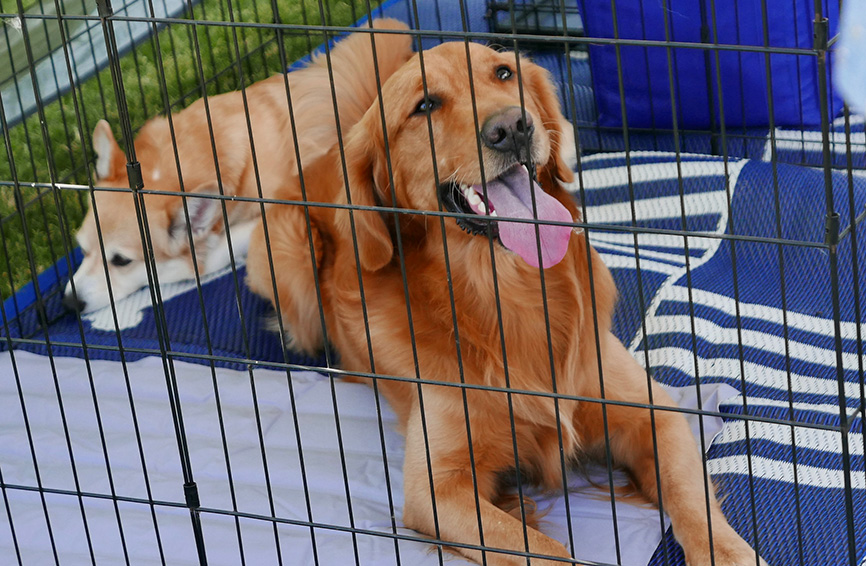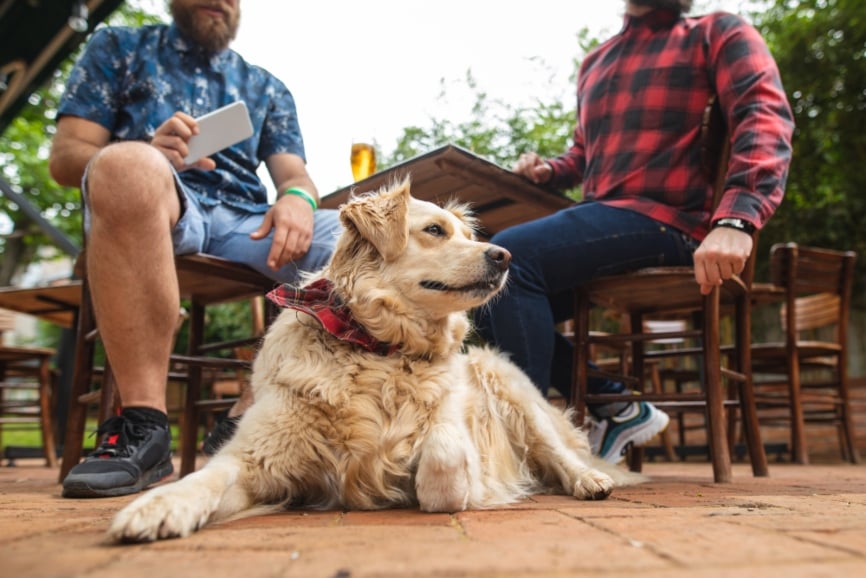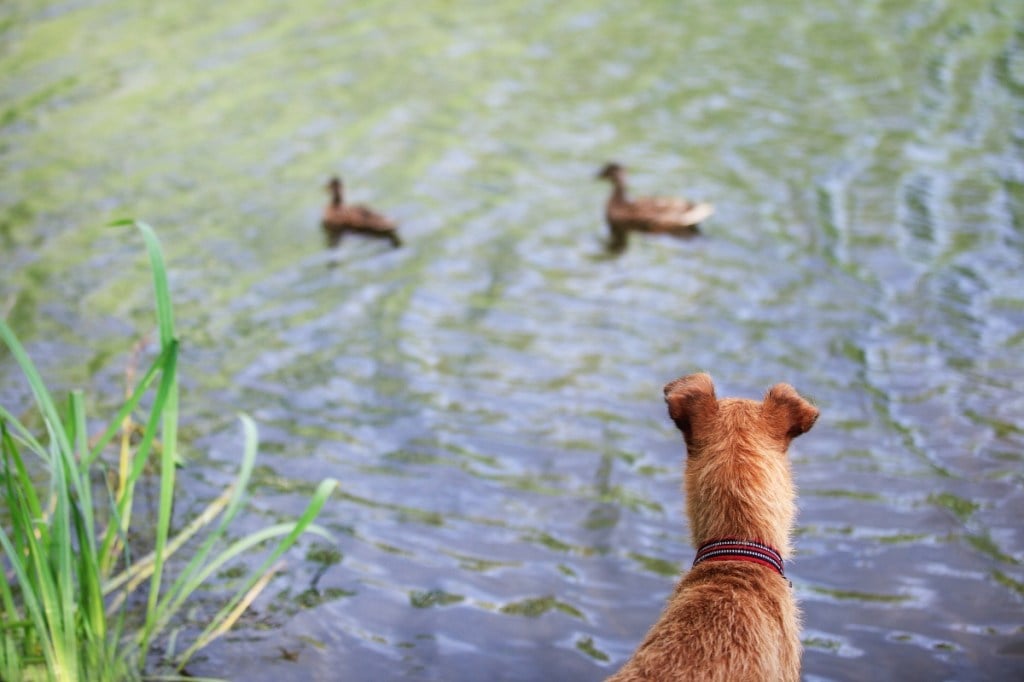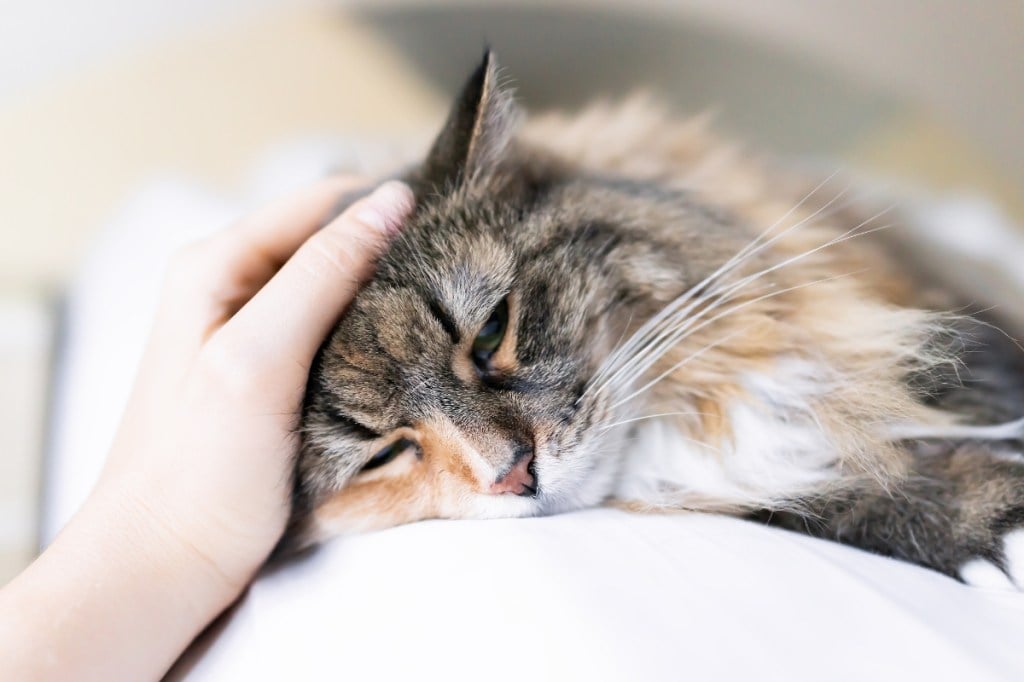Table of Contents
Even if you are someone who thinks of your dog as your child and gives them free rein most of the time, teaching them to be comfortable in a crate is beneficial for safety and practical reasons. And the earlier you start, preferably when they are puppies, the easier it will be.
The key is never to use the crate as a punishment, only as a safe space and only for a limited time. Once your dog learns this, they will be content to go in the crate. Also, keep in mind that crate training takes time – weeks or even months – so be patient and don’t expect results right away. Once you have crate trained your dog, you will reap benefits for the life of your dog.
What size of crate is best?
Before you start, you will want to make sure that the crate is the right size for your dog. It really can’t be too big for home use, but you will want to make sure it’s not too small. If it’s for a puppy, make sure it’s big enough for them to grow into. And if you think you’ll be traveling with the crate, you want to make sure it fits in your car and complies with any size requirements from the airlines.
The crate should be big enough for the dog to stretch out completely and get up and turn around without hitting his head. This website has dimensions for different weights and breeds. Learn about the different types of crates available.
Why crate train your dog:
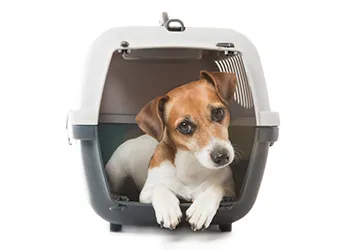 Potty training a puppy: using a crate at night makes potty training much easier. Dogs like their space to be clean, so crating is a great tool to housetrain because they will tell you when it’s time to go with some whining and scratching. See some potty training tips here.
Potty training a puppy: using a crate at night makes potty training much easier. Dogs like their space to be clean, so crating is a great tool to housetrain because they will tell you when it’s time to go with some whining and scratching. See some potty training tips here.- To prevent a puppy or dog from destroying things and keep them out of trouble while you are away.
- If you have an adult dog and a new puppy, using the crate for your puppy’s nap time will be a great way to help your puppy unwind to fall asleep and a welcomed break for your adult dog.
- Traveling in the car is less stressful for a dog when in a crate, as the less they can see, the less anxious they are.
- Most dogs learn to love crates, as they are a safe place for your dog to retreat to if they are feeling overwhelmed. Your dog shouldn’t be disturbed if they have sought refuge in their crate. Never try to coax them out if they need a break.
- If you plan on taking your dog on a plane in the future, being in a crate is a requirement unless they are a service animal.
When should you not use a crate?
- If you are looking for a long-term place to keep your dog. Dogs need to be with their family members when we are home, not secluded in another room or a crate.
- If you are trying to punish your dog – the dog will learn to avoid the crate and could refuse to go inside, or he could become extremely agitated in an attempt to be let out of the crate and hurt themselves. Your dog could also become afraid of the crate, and any negative association will only cause trauma.
- Ideally, an adult dog should not be left in a crate for more than a couple of hours at a time unless he is crated during the night. For puppies, you should not leave them in the crate longer than their ability to hold their urine, which is no more than an hour or so, depending on the puppy’s age.
- Avoid crating a dog who is experiencing anxiety, whether caused by the confinement itself, separation from a loved one, or environmental factors such as thunder or fireworks. If kept in a crate when they are afraid or stressed, a dog can hurt themselves trying to break free, contributing to their anxiety about the crate.
How to crate train your dog:
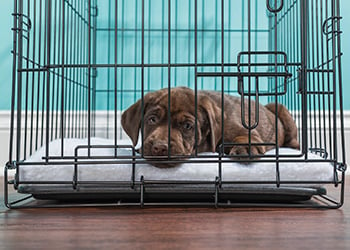 Make the crate an appealing space with soft blankets, a favorite toy, and something to chew. Ensure that the toys and chew are safe for your dog when unmonitored. Put a blanket over the top and sides of the crate, leaving the door uncovered. This makes the crate feel more like a den, a safe space. Put a high-value treat just inside the door of the crate. Ask your dog to go into the crate, say ‘crate (dog’s name),’ when they go in, ‘good crate (dog’s name).’ Let them take the treat out if they want to. Always let them go into the crate on their own, never force them.
Make the crate an appealing space with soft blankets, a favorite toy, and something to chew. Ensure that the toys and chew are safe for your dog when unmonitored. Put a blanket over the top and sides of the crate, leaving the door uncovered. This makes the crate feel more like a den, a safe space. Put a high-value treat just inside the door of the crate. Ask your dog to go into the crate, say ‘crate (dog’s name),’ when they go in, ‘good crate (dog’s name).’ Let them take the treat out if they want to. Always let them go into the crate on their own, never force them.- After they seem more comfortable going into the crate and aren’t grabbing the treat and immediately leaving the crate, move the treat a little further back in the crate. Slowly continue moving the treat further back into the crate as they get more comfortable entering the crate. Remember that this may take days or even weeks.
- Ask them to go into the crate, as previously described, then slowly close the crate door, and sit on the ground, close to the crate. Don’t acknowledge them at all; don’t look at them or talk to them. You can yawn, which is comforting to dogs. If they whine, bark, or paw at the door, pull the blanket over the front so that they can’t see you. Wait until they are quiet for a minute, then pull the blanket back so that they can see you, with no acknowledgment as you do so. Only practice for five minutes with the crate door closed at first. The more comfortable they become, slowly add more time when you practice.
- Once they are comfortable with the crate door closed and aren’t whining, barking, or pawing at the door, sit in a chair a little further away and practice the same protocol (no looking at them or talking).
- Continue the same steps, but sit in a chair across the room from the crate.
- Once they are OK with you sitting further away, walk out of the room for 30 seconds and return, no acknowledgment as you do so, while they are in the crate. If they are whining, barking, etc. don’t return to the room until they have been quiet for 30 seconds. If they whine or bark when you return to the room, leave again.
In summary
Practice the crate training steps until your dog is comfortable being left in the crate. You can’t force them; it will just take time. When you practice, always remember to be calm and relaxed, never in a rush. Have confidence in them and trust that eventually, they will learn to feel safe in the crate.
Sarah-Anne Reed is a holistic dog trainer, and owner of Pack Dynamics, LLC ®. Her practice focuses on understanding and respecting dogs as a different species and honoring them as individual beings.
Are you someone who spends a lot of time training your dog? Then you are a great candidate for pet insurance. Get a quote and make sure you’re covered for future injuries or illnesses.
